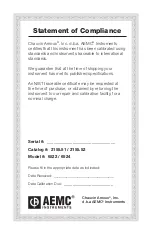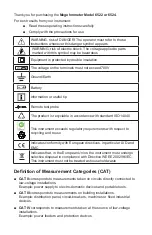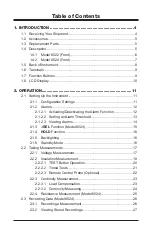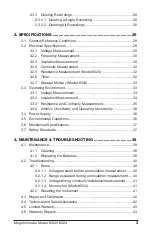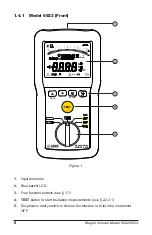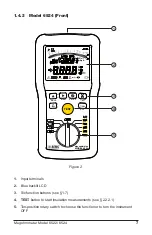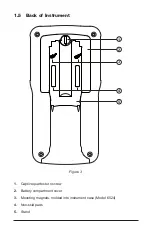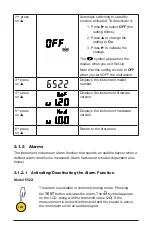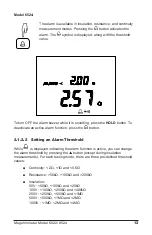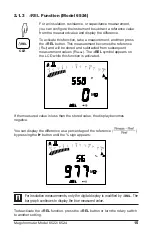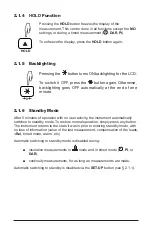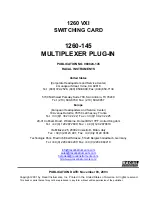
PRECAUTIONS FOR USE
This instrument is compliant with safety standard IEC 61010-2-030, and the leads
are compliant with IEC 61010-031, for voltages up to 600V in CAT IV or 1000V in
CAT III.
Failure to observe the following safety instructions may result in electric shock,
fire, explosion, and damage to the instrument and installation.
■
Carefully read and understand all precautions for use.
■
Be aware of all electrical hazards when using this instrument.
■ Using this instrument other than as specified may compromise its user
protection features.
■
The safety of any system in which this instrument is incorporated is the
responsibility of the integrator of the system.
■ This instrument can be used on CAT IV installations, for voltages
not exceeding 600V
RMS
with respect to ground or 700V
RMS
maximum
between terminals.
■
Do not use the instrument on networks whose voltage or category
exceeds those specified in this manual.
■
Observe all environmental conditions of use (see §
■
Except for voltage measurements, take no measurements on
electrically “live” systems.
■
Do not use the instrument if it appears damaged, incomplete, or poorly
closed.
■
Before each use, check the condition of the insulation on the leads,
housing, and accessories. Any part on which the insulation is
deteriorated (even partially) must be set aside for repair or scrapping.
■
Using the instrument without its battery compartment cover may result
in electric shock to the user.
■
Before using your instrument, ensure it is completely dry.
■
Use only the leads and accessories supplied. The use of leads (or
other accessories) of a lower voltage rating or category limits the use
of the instrument/leads (or accessories) combination to the lowest
category and service voltage.
■
When handling the leads, test probes, and alligator clips, keep your
fingers behind the physical guards.
■
Before removing the battery compartment cover, ensure all
measurement leads and accessories are disconnected. Replace all
batteries at once. Use alkaline batteries.
■
Use personal protection equipment where appropriate.
■
All troubleshooting and metrological checks must be done by
competent, accredited personnel.


